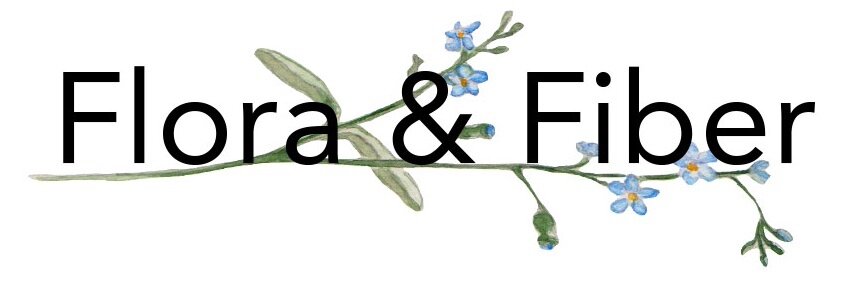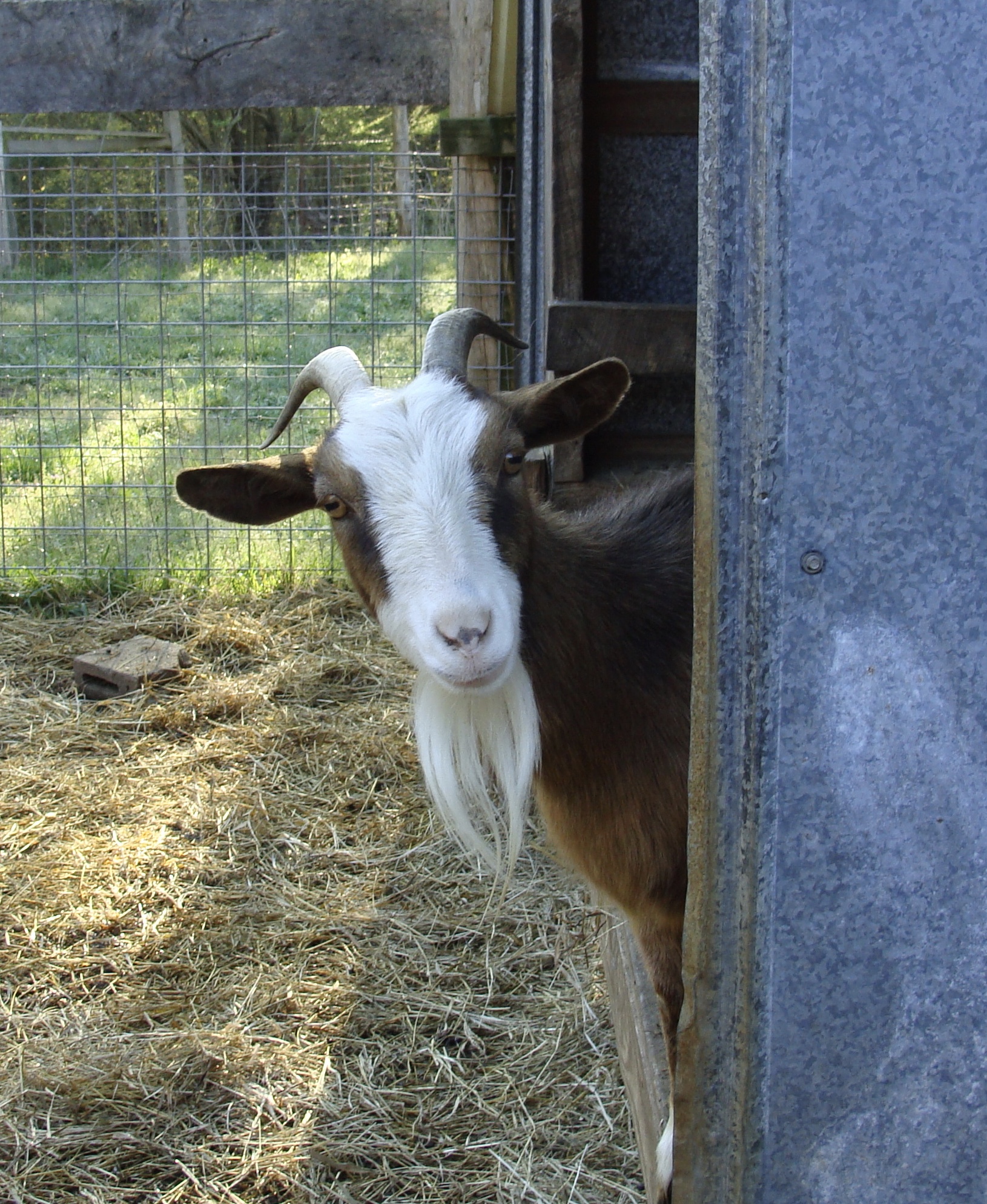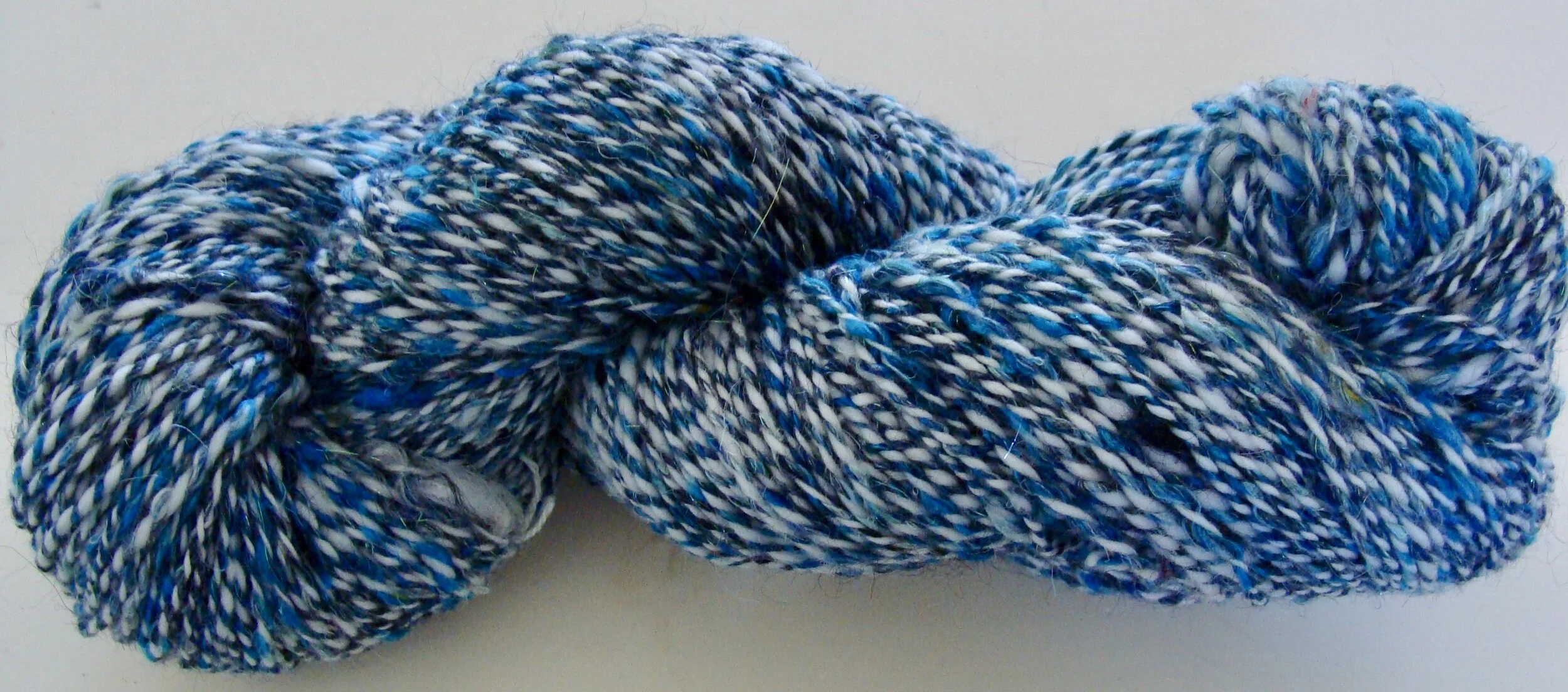Cashmere Gathering
Many of you will agree that Cashmere is the ultimate luxury fiber; a classic prized for its incredible softness, snuggly warmth, and airy light weight.
But did you know that Cashmere comes from the humble goat? Cashmere is actually the goat’s soft, downy undercoat that grows as an insulation against the winter cold and then sheds in early Spring.
That's right - I produce cashmere!
Any goat (except Angoras) can grow cashmere. While there is no such thing as a “purebred” cashmere goat, there are goats that have been selectively bred to produce it in greater amounts.
Cashmere History
The word cashmere come from Kashmir, a high altitude area in the Himalayas. For hundreds of years, cashmere producing goats have been bred and their fiber exported from this region in Central Asia.
The story goes that the Western world's infatuation with cashmere began when Napoleon brought back a ring shawl for his wife, Josephine. These soft, warm cashmere shawls garnered their name because they were so fine they could be pulled through a wedding ring. Victorian England prized the loft, warmth, and feel of fabric made from cashmere, placing it in demand by those in high society.
European immigrants to Australia and the American Southwest brought with them the domestic goat as a provider of both milk and meat. Over the years, as some Australian farms failed, many goats escaped, resulting in flocks of wild, or feral, goats roaming the Outback. In the US, especially in the Texas “outback”, huge tracts of land were dedicated to raising “Spanish” meat goats.
The Australians first noticed that natural selection had produced a hardy, robust goat, some of which had developed a luxurious, downy undercoat as protection from the harsh weather. In the late 1970’s, Australian scientists began selecting those fiber bearing animals and breeding them for cashmere production. It was also discovered that the Spanish goats from the American Southwest had similar fiber qualities! Thus the United States also started breeding for cashmere producing goats in the 1980s.
While the Spanish goats provided cashmere breeding stock, there are good cashmere producers among other goat breeds including Pygmy and Myotonic (or Tennessee Fainting) goats. Even dairy breeds, such as Toggenburg, Saanen, and Nubian, can produce fairly good cashmere.
Cashmere Characteristics
Cashmere fiber is two coated. Most of the hair on a cashmere goat is guard hair. The downy undercoat is the cashmere. The guard hair may be long or short, but it is coarse, straight, and distinguishable from the cashmere. The harvested fleece must be dehaired in order to remove this guard hair. It takes only a few overlooked, spiky guard hairs to cause that luxuriously soft cashmere to itch and irritate; aka the ‘Prickle Factor”.
The quality of the cashmere fleece is determined by three factors: its fiber length, its diameter, and the degree of crimping (aka style).
Standards vary somewhat from country to country but in general the fiber must be at least 1-1¼” long and finer than 19 µ (microns). A micron is one-millionth of a meter (a meter is about a yard), so each fiber is very, very fine which is what gives Cashmere its silky soft hand.
Cashmere fiber is irregularly crimped rather than wavy. The crimpiness of the fiber gives it “loft” and enables textiles made of cashmere to provide warmth without weight.
When compared to wool and mohair, cashmere fiber is low in luster (shine) and does not have a slick feel.
Guard hair comes in four colors: White, Ginger or Red, Brown, and Black. Goats that appear grey have guard hairs that are half white and half black, resulting in an overall grey cast. Sometimes goats are solid colors and sometimes they have darker or lighter stripes, spots or patches.
The cashmere fiber or underdown, comes in three colors: White, Grey, or Brown; very rarely, it can be black. The vast majority of fleeces fall into the grey category in a mixed herd because it includes white goats with just a few black guard hairs, grey goats, light brown goats, multi-colored goats and goats that appear black but whose underdown is actually light colored.
some of our herd during the morning siesta
Goat Factoid
Both male and female goats have horns, which serve to dissipate heat during the summer. Traditionally, dairy goats are de-horned as babies (horns removed) while cashmere and other fiber goats are not de-horned. We chose not to dehorn our goats for several reasons: we like the look of the horns, we don’t like the dehorning process, South Carolina summers are so hot, and as many shepherds soon discover, horns are useful as handles when herding an errant goat!
Other Goat Fibers
There are two basic types of goat-produced fibers: cashmere and mohair. Cashmere can be produced by all breeds of goat besides Angora goats.
Mohair (Angora) Angora goats exclusively produce mohair, but have no cashmere. Mohair fiber has many personalities that I plan to cover in a future post. Suffice it to say, mohair is longer, lustrous, smooth, strong, and versatile with a range of fiber diameters.
cashmere fiber (left) and mohair fiber (right)
Cashgora Since angora (mohair) goats produce fiber, and a lot of it, attempts were made to breed them to cashmere goats to increase yield. Hence cash + gora from the combination of the goat names. What resulted was a long, wavy, lustrous, coarser fiber and the presence of a hollow third fiber type that is neither guard hair nor underdown. Cashgora fiber diameter falls between cashmere and mohair and is stronger and coarser than cashmere but finer than mohair. While cashgora is not near as soft and light as cashmere, it is more durable, does’t pill as much, and is easier to hand spin.
The term cashgora can be confusing. In addition to indicating an angora/cashmere cross breed, the term is also used sometimes to denote cashmere fibers that aren’t fine enough or crimpy enough to meet cashmere standards.
Pygoras, PCA, Pycazz, and Nigora - a discussion for another post!
Cashmere Gathering
So back to Cashmere Gathering, a term I adopted after reading an article on woolgathering (article link here)
Fiber animals have a tendency to rub during the Spring leaving behind little bits of shed wool as they pass by. If your livelihood depended on how much wool you could harvest, it would be important to get every last bit of wool that you could. Thus, woolgathering is gleaning all those shed snippets of wool that collect on branches, thorns, and fences.
Even though the winters of South Carolina are not near as harsh as those of the Himalayas, my little herd of dairy goats manages to produce some cashmere of their own. I begin to see cashmere collect on the pasture fences in mid to late February.
Goats will shed naturally but two methods are used to actually harvest the cashmere – shearing or combing. As you might expect, sheared fleece contains considerably more guard hair than combed fleece. In general, shearing is reserved for more commercial cashmere production where specialized dehairing equipment is available.
When I start to see those bits of cashmere collect on the fence line, I know it’s time to harvest which I do by hand combing. Hair and down are shed at different times, so at this point the hand-combed down is fairly clean of guard hair. However, as it moves later into March, the ratio of hair to down greatly increases thus bringing my cashmere harvest to a close for that year. I’ve read the yield from combing will provide about 70% useable down fiber.
Our goats are dairy goats and have not been bred specifically for cashmere production. In our herd, I have found the pure Saanens have hardly any down. Some of our Mini Saanens (Saannen/Nigerian Dwarf cross) have quite a bit of cashmere while others have more hair to down ratio making it not worth the effort to harvest and dehair for cashmere. My best cashmere producers have Pygmy and Nubian in their bloodlines. I have also found, as is the case with other fibers, the “kid” down from my doelings is noticeably softer.
In the next post, I’ll talk about dehairing, prepping and spinning cashmere.
References
Cashmere Goat Association http://www.cashmeregoatassociation.org
The Handspinner’s Companion by Leigh Morris
The Fleece & Fiber Sourcebook by Deborah Robson & Carol Ekarius
As an update on my book ‘Krokbragd: How to Design & Weave’, I am so pleased at the reception it continues to receive. Thank you to all who have purchased the book, wrote reviews, and sent me wishes and congratulations. You have truly warmed my heart!!!
Pin for Later




















